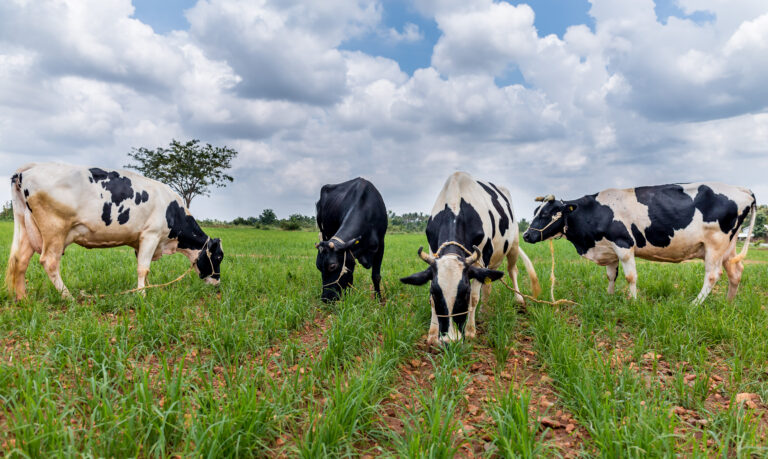Why are youngsters not getting into farming?

From 2004-05 and 2011-12, India’s labor force in the agricultural sector went down from 58.5% to 48.9%. While in recent years there has been a slight uptick which is attributable to the covid-19 pandemic, the larger trend is clear. From 1991-2021, employment in agriculture has dropped from 64% to 44%.
Agriculture makes up 3% of the GDP in the world, a third of what it was a few decades prior.
Agricultural population by 2050, estimates indicate, will drop from 58.2% in 2001 to about 25.7%. India will also be an urban center.
A study conducted in a village in Warangal found that village youths were mostly graduates in arts and commerce fields who were unemployed and sought to leave their villages for urban centers in search of jobs. The youths also identified farming as being high-risk, due to water shortages and crop assurance. Even if these two factors were somehow solved for, the youth still expressed skepticism about finding markets for their crops. Agriculture was the last resort for them.
Most parents of the youths who were farmers themselves also did not want their children to follow in their footsteps, citing similar reasons; agriculture bearing more expenses, more risks and the disproportionate ratio of risk and reward. Another farmer parent quipped that other parents who were doctors or engineers would want their offspring to continue on the same path, but the same did not hold for parents who were farmers, who wanted their children to seek different jobs.
However, youths migrating from rural areas diminished the rural workforce while also creating unskilled laborers in urban centers. Even after these migrations, the youth do not always find the lucrative careers they hoped to find after migrating, as the promises of urban life such as better standards of living are still challenging due to their meager earnings.
A report by FAO underlines how the ambitions of youth are shaped by structural forces, such as being born and brought up in an era of neoliberal economics and policy, where self-reliance, independence, success, growth and individualism are treasured values. Young people view education as a means of achieving these goals. In this way, education becomes inextricably tied to the idea of ‘moving forward’, where farming becomes unviable because it cannot offer way of ‘moving forward’.
[1] https://thewire.in/economy/share-of-agriculture-in-employment-rose-manufacturing-declined-in-2021-22-plfs
[2] https://data.worldbank.org/indicator/SL.AGR.EMPL.ZS?locations=IN
[3] https://tigr2ess.globalfood.cam.ac.uk/news/rural-youth-aspirations-can-indian-agriculture-regain-interest-rural-youth
[4] https://www.fao.org/3/cb5464en/cb5464en.pdf
The idea of moving forward is tied towards non-manual and high-skilled labor. As much as it is mired by structural and intersectional inequalities, it still persists.
This can also be the reason why such a small fraction of graduates from agricultural universities take up farming. Farming does not map on to the values that have been inculcated into the youth by their environments and the way they have been brought up.
Formal education systems devalue and degrade farming and related occupations, presenting it as an option for only those who do not succeed in schools. It does this in two ways: 1. Presenting the idea of ’moving-forward’ which excludes farming from its set of aspirations and 2. by neglecting and not developing skills related to farming.
The report also underlines the disparity that exists between the ambition of young people: About 80% of youth who are not yet working aspire towards high-skill, non-manual jobs but only about 20% of youth do get to pursue these high-skill jobs. In a study of 32 countries, the researchers come to the harrowing conclusion that about 60% of youth who aspire towards these jobs will be unable to find employment due to the already precarious job market.
The jobs these youths aspire to take up are in fact quite rare, and that leaves a vast majority of youths being unable to pursue these jobs. Rural youth, however, suggested they would take up agriculture given that it wasn’t the only source of income, i.e they wanted agriculture combined with something ancillary to make agriculture viable for them.
Young women over young men expressed more hesitation to gravitate towards farming, but paradoxically, in south Asia, migrations out of rural areas were spearheaded by men, with women then taking up farming even as the agricultural sector was [is] declining.
Across the world, the report notes, there is a generational break enacted by the rural youth in that agriculture is not the preferred career option amongst rural youth.
The reasons, the report suggests, could stem from structural barriers such as class, race [caste in the Indian context], etc. which make farming unviable and undignified.
Agriculture also ranks high on risk indexes, requiring working with chemicals, irregular hours and physical labor.
Agriculture comprises 25% or more of the GDP in developing countries. However, the age of farmers also is rising which displays the disinterest that rural youths have in farming. Economists have emphasized the role that smallholder farmers play in eradicating poverty and strengthening food systems. The unemployment rates of youths can also be minimized by incentivising farming.
The connotations that farming harbors is primarily negative. In interviews conducted by AK, urban youth who belong to well-off families stated that they would not consider farming as a profession due to the work involved and the minimal returns that it provides. Corporate desk jobs were viewed as more lucrative and more comfortable.
[5] https://www.frontiersin.org/articles/10.3389/fpubh.2022.937657/full
[6] https://www.heifer.org/blog/what-is-the-role-of-youth-in-agriculture.html
In Africa, youth view farming to be ‘antiquated and unprofitable’. There is a lack of access to technology, farmland, education and financing among the other obstacles that farming presents such as invasive insects, pests and inconsistent yields. The traditional view of farming is that of subsistence, hence they’re refused credit (loans) from banks because farming is viewed as unprofitable. Africa has the highest concentration of youth aged 15-24, being 200 million. These youth make up 60% of the unemployed.
In Lithuania, a Balkan country, a survey revealed that the reason youths are moving away from farming, and the views that they held of farmers were those of “rugged, tanned men working outside”.
In India, a large number of the youth aged 14-18, 72% were working in family owned farms, but only about 1.2% expressed interest in becoming farmers.
Undergraduate enrolment in agriculture and veterinary courses amounts to less than half a percent. Out of the 0.4 million students studying at agricultural universities, only about 0.1 million manage to graduate and about 70-80% of these graduates take up jobs in non-agricultural sectors.
Income of an average farming household in India is about Rs.3800 per month. This makes farming unviable and there is a disparity that emerges with farming between the income generated and the amount of work that farming demands. There is also a general trend with older farmers being hesitant to accept newer technological innovations in farming, relying instead on conventional and low-efficiency methods. Youth occupy that precarious ground where they find themselves rejecting the professions of their fathers and finding greener pastures in urban centers. The former is important for a myriad of reasons, not least being that by 2050, there will be 9 billion mouths to feed and agriculture will need to keep pace with the accelerating population growth rate. It is therefore crucial for youth to be integrated back into agriculture.
Families also tend not to marry into other families where the primary income is through agriculture.
Of farmers who continued with agriculture, about 60% wanted to quit and move into the city seeking better fortunes. Just about 18 percent of farmers reported that they’d want their prodigy to take up the same line of work as themselves.
In the FAO’s 2014 report “Youth and Agriculture: Key challenges and solutions”, a handful of reasons why youth are facing challenges in agriculture are elaborated. This begins with six challenges: 1. a lack of education and knowledge, 2. lack of access to land, 3. lack of access to financial services, 4. difficulties accessing green jobs, 5. limited access to markets and limited involvement in policy making.
- Education and knowledge have widely been documented to play a crucial role in rural development. Formal education includes numeracy, literacy skills which are cultivated in the secondary and primary schooling years. Non-formal education includes the development of vocational skills and extension services, which are areas that can provide training specific to agriculture.
In developing countries, rural youth do not have access to quality education and this is coupled with challenges of poverty – many children are unable to attend classes or absorb the information being presented in class due to lack of nutrition and energy.
During seasonal peaks, farmers might see no option than to withhold their children from attending schools due to shortages in labor. Infrastructurally, rural schools tend not to have quality materials and lack many basic amenities such as hygienic washrooms. Schools also might be located far from rural communities, making commuting for students difficult. Rural children are twice as likely to be out of school than urban children.
School curricula also tend not be relevant to the rural context, favoring more conventional and urbanized forms of knowledge. Agricultural knowledge is even more marginalized in many countries, disappearing outright from school curricula or being inadequate. Moreover, agricultural activities are used as punishment in many rural schools and are seen befitting people who are underachievers. This, combined with a lack of good teachers, exacerbates the rural situation.
Agricultural knowledge, then, is transferred in an informal way from parents to children. Youth, however, expressed interest in having the same information delivered to them in a more structured and formal manner.
Vocational training could also potentially contribute to agricultural education but is hampered by lack of funding and already low education rates among youth who cannot fully utilize the training.
Higher education too occupies an important role in promoting agriculture, as the establishment of universities focused on agricultural research establishing connections with farming communities have been beneficial to the agricultural sector in many countries, including India. This connection between farming communities and agriculture universities is essential as it allows for broader forms of knowledge, dissemination of research and help in problem-solving at the micro level. However, in Asia, just about 4 percent of university students are enrolled in agriculture programs.
Information communication technologies are received positively by rural youth. It is conclusively proven that young farmers are more willing to employ technology in farming while also adapting to it easily.
Even as mobile phones are prevalent in rural areas, access to the internet and electricity is limited. Women experience worse access to ICTs due to a higher level of illiteracy and a lack of the control of financial resources.
2. Access to land remains an important feature. Youth recognize ownership of land as granting them security through collateral, enabling them to climb up the social order and participate in decisions taken by their communities and joining producer organizations. Apart from farming, land ownership has been linked to employment opportunities and granting household food security.
Youth report that the primary means of accessing land is through inheritance. However, due to increasing life expectancy rates, the transfer of lands to the youth is deferred, if it happens at all. Tradition too, in various regions, proscribes younger men from owning land unless they meet certain requirements. Youth end up working in their family-owned land for marginal returns while they await inheritance. For younger women, the situation isn’t any better as land inheritance, even when laws are rectified to enable women to inherit land, there are other such laws which might nullify these provisions. This is compounded by the confidence and bureaucratic literacy that women require to get these laws enforced, which is denied to women.
The ownership of land is also increasingly individualized, in contrast to previous eras where land used to be owned collectively by clans, families, tribes, etc. This leads poverty stricken parents to sell off their landholdings to outsiders, without consulting their children – the youth, which again presents a barrier with regards to land access. In population dense countries, landholding is also highly fragmented, with laws preventing further fragmentation being implemented. The extant land also is usually in control by the eldest son of the family.
Arable land also is decreasing over time, wrought by land degradation.
Expecting youth to purchase land is not tenable due to the myriad of challenges they already face such as unemployment, low wages and extremely high land prices. Loans, too, are not available easily. Further, youth also lack knowledge of the complex customs, traditions and laws surrounding land acquisition which might lead to them being duped by corrupt land dealers. Youth land rights are also not a major concern for policy makers which prevents a top-down intervention as well.
3. Access to financial services: Insurance schemes, loans, savings, and other services play a crucial role in agriculture. Even if there is no landholding, these instruments allow youth to invest in planting, harvesting and the storage of produce. Financial service providers include banks, credit/savings cooperative organizations and the like. Youth, however, comprise a small part of formal services in proportion to their population. Lending in rural areas is considered to be high-risk due to the variability that inheres farming; crop failures, unproductive yields and the volatility of natural resources. Besides, the remoteness of rural areas and fractured population clusters weigh down on operating costs for financial institutions. The focus of formal financial institutions are mostly geared towards credit instead of savings or insurance schemes, both of which are important in wealth creation for youth. Most financial institutions do not target youth with many countries’ laws forbidding youth below the age of 18 from accessing financial services. Consequently, youth are viewed as high-risk clientele by financial institutions due to their limited assets and experience. Youth, then, mostly stick to informal financial institutions such as borrowing from friends and family.
ICTs are also used by almost 45% of youth from mostly urban areas to access services such as mobile banking. However, for rural youth, the lack of internet in their areas presents a barrier to accessing banking/financial services on-line.
Agricultural insurance schemes provide risk management options to youth but are also not affordable to them.
Collective action in the form of self-help groups to generate savings amongst rural youth is also seen to be lacking. Financial services for young rural women is even worse due to a higher rate of illiteracy, patriarchal norms and societal customs.
4. Access to green jobs: Green jobs are those jobs in “agricultural, manufacturing, research and development (R&D), administrative, and service activities that contribute(s) substantially to preserving or restoring environmental quality”. Jobs which reduce energy usage, materials and general consumption of natural resources through efficient strategies also constitute green jobs.
There is a general willingness among youth to participate in greener economies, but this does not translate into employment.
Generally, sustainable agricultural practices such as organic farming require more labor units contra conventional methods. It is a tradeoff with a potential to generate better social and economic returns, however. Due to young people migrating from rural to urban areas in search of work in developing countries, green jobs are viable to them. Due to the role young women play in natural resource management in rural areas, it is still more beneficial to them.
What becomes important for green economies, then, is skill development which might flow as such: Reduced demand for certain jobs -Increased demands for other jobs and greening of existing jobs. Green job areas include organic farming, agro processing, agroforestry, beekeeping, etc. Energy production via biogasses also provides employment opportunities. Landscape maintenance, climate change and environmental research, on-the-farm agro processing also comprise some green job areas.
There needs to be an upheaval at the policy level extending to formal education and informal education such as vocational training to enable youth to have access to the skills these jobs will require. Still, it does not guarantee that youth might find employment in these areas, even when labor markets are expanded.
5. Access to Markets: Market access allows for farmers to deliver output to their buyers and acquire inputs and services for their farms. Markets enable income generation, consequently alleviating poverty and hunger. Therefore, access to markets especially for smallholder farmers is essential.
It is pertinent, then, for rural youths to gain access to markets. But their access to markets is compounded by the factors listed earlier alongside a lack of experience and knowledge in dealing with markets. They lack information about prices and entrepreneurial skills. Access to such information is lesser in rural areas compared to urban ones. Technological literacy among rural women is also a factor.
From the onset of globalization, markets have become increasingly competitive and connected. This leads to higher checks on quality standards which need to be adhered to by sellers. Supermarkets also prefer consistent deliverables with sizable quantities – which large farm owners are able to supply but smallholders are not. Smallholders are forced to adhere to international standards in many instances, thereby raising their production costs as they are themselves responsible for certification and investment in technologies which enable them to not be subsumed by large farm holders.
Even though smallholders can sell their produce to local markets due to simpler logistics., integration into national and international systems is still crucial as even these local markets can be seen following in the footsteps of larger markets, placing a burden on the smallholder.
In smaller markets such as rural ones, the lesser number of intermediaries (who hold sway in influencing market policies through having knowledge about the market) makes it easier for inexperienced young farmers to conduct their business. But in longer chains, there is a tendency for there to be a greater number of intermediaries which presents a challenge to younger farmers’ inexperience which leads to a lack of negotiating power. This enables the intermediaries to take significant portions of the profits away from the farmers while meteing out high interest rates for borrowers who need to purchase output.
6. Engagement in policy dialogue: due to the high unemployment among youth around the world, agriculture provides lucrative opportunities for youth.
Engaging youth in policy making, not just directing policy for youth is crucial to stimulate interest and incentive among youth in agriculture.
However, participation at this level amounts to little less than tokenism or something merely nominal. Seniority is equated with authority due to factors such as societal norms and this leads to a marginalization of younger voices in policy discourse. This is doubly so for younger women, who’s gender itself is traditionally disassociated from decision making, even at the household level.
Youth, as one study found, are viewed as a nuisance in policy making and are not reckoned with seriously. Therefore, agricultural policy makers who ignore younger voices end up drafting policies whilst being unaware of the expectations and reality of the younger generations.
Further, opportunities for youth participation are primarily geared towards ‘non-poor men’ living in urban centers and having access to official languages and this discounts rural youth who do not have the necessary prerequisites or economic standing required to navigate and understand their own rights and privileges, notwithstanding participation.
Youth collectives which try to give voice to their needs are also in dearth, as youth are not taking leadership positions to advocate for their own rights.
There are small local organizations for articulating themselves but these do not carry the same influence that larger ones do.
References:
https://www.heifer.org/blog/what-is-the-role-of-youth-in-agriculture.html
https://www.frontiersin.org/articles/10.3389/fpubh.2022.937657/full
https://www.fao.org/3/cb5464en/cb5464en.pdf
Youth and Agriculture: Key Challenges and Concrete Solutions (fao.org)
https://data.worldbank.org/indicator/SL.AGR.EMPL.ZS?locations=IN
-Author:
Shreyas S
Student of Philosophy
Azim Premji University, Bangalore



















